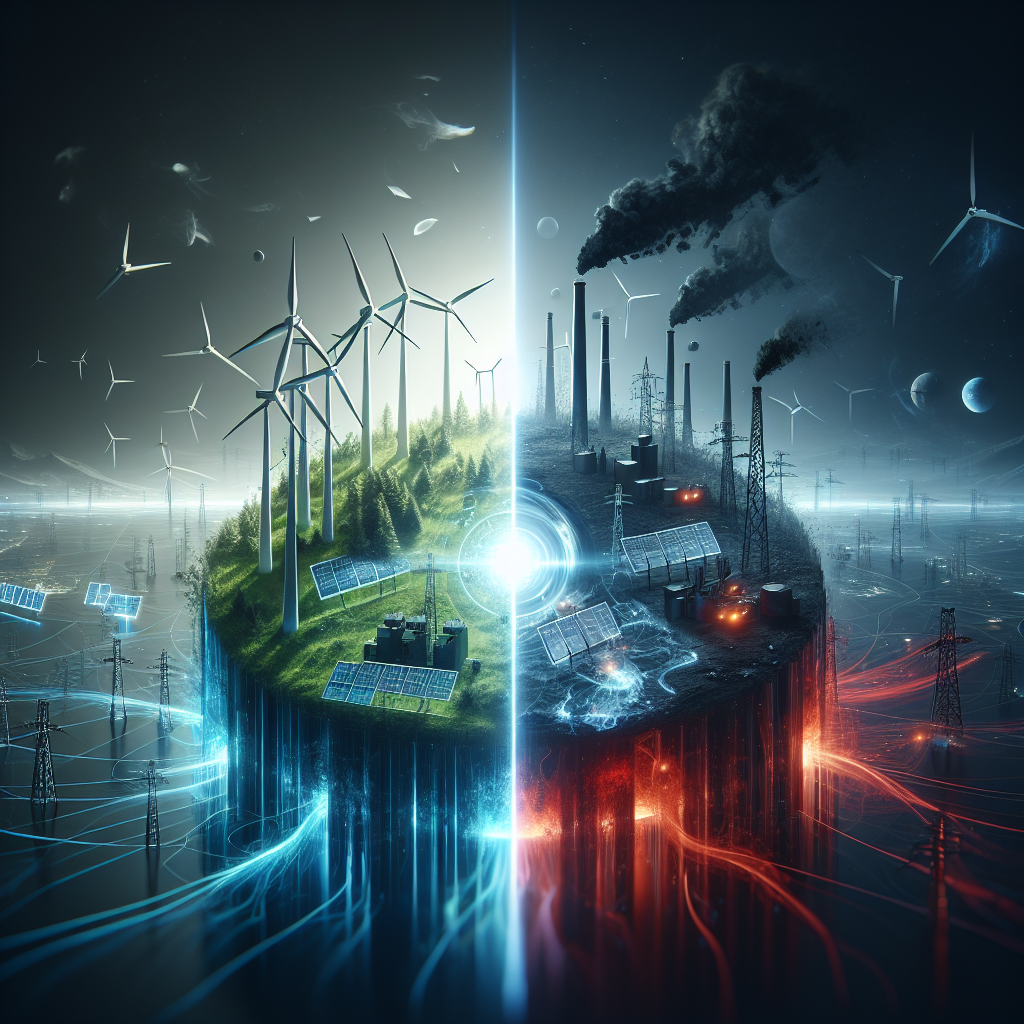The Dark Side of Energy Storage: Addressing Sustainability Myths
As the world pivots towards renewable energy sources, energy storage solutions have become a cornerstone for ensuring a stable and reliable power supply. The notion of solar panels and wind turbines powering our homes and industries is attractive, evoking images of a sustainable, green future. However, the reality of energy storage is more complex and nuanced, revealing a darker side often overshadowed by optimistic narratives. This article delves into the sustainability myths surrounding energy storage, shedding light on the environmental and ethical implications of this burgeoning industry.
The Promise of Energy Storage
Energy storage systems (ESS) are critical for the efficient utilization of intermittent renewable energy sources. Batteries, particularly lithium-ion types, are the most prevalent form of ESS, owing to their high energy density and declining costs. These systems promise to decouple energy generation from consumption, enabling the storage of excess energy produced during peak generation times for use during periods of high demand or low generation.
The Hidden Costs of Battery Production
Environmental Impact
The production of batteries, especially lithium-ion batteries, entails significant environmental challenges. The extraction of raw materials such as lithium, cobalt, and nickel is resource-intensive and environmentally damaging. For instance, lithium extraction often requires large quantities of water, exacerbating water scarcity in arid regions like the Lithium Triangle in South America. Similarly, cobalt mining in the Democratic Republic of Congo not only depletes natural resources but also causes severe soil and water contamination.
The manufacturing process itself is energy-intensive, contributing to greenhouse gas emissions. According to a study by the Swedish Environmental Research Institute, the production of one kilogram of lithium-ion battery emits between 150 to 200 kilograms of CO2. This carbon footprint is significant, especially when considering the scale at which batteries are being produced to meet global energy storage needs.
Ethical Concerns
Beyond the environmental impacts, the extraction and processing of battery materials raise serious ethical issues. Cobalt mining, for instance, is notorious for its human rights abuses, including child labor and poor working conditions. The rush to secure these valuable resources often leads to exploitative labor practices and socio-economic instability in mining regions.
Recycling and Disposal Challenges
The end-of-life phase of batteries presents another set of challenges. Current recycling processes for lithium-ion batteries are energy-intensive and not economically viable at scale. As a result, a significant proportion of used batteries ends up in landfills, where they pose environmental hazards due to the leakage of toxic substances.
Research is ongoing to develop more efficient and cost-effective recycling methods, but the pace of technological advancement has not kept up with the rapid deployment of batteries. Hence, the burgeoning e-waste problem presents a growing concern for environmental sustainability.
Energy Storage Alternatives
Given the drawbacks of lithium-ion batteries, exploring alternative energy storage solutions is imperative. Technologies such as flow batteries, compressed air energy storage (CAES), and hydrogen fuel cells offer potential alternatives, each with its own set of advantages and challenges.
– Flow Batteries: These batteries use liquid electrolytes that flow through a membrane to store energy. They offer longer lifespans and better scalability compared to lithium-ion batteries but are currently more expensive and less energy-dense.
– Compressed Air Energy Storage (CAES): CAES systems store energy by compressing air and then releasing it to drive turbines when electricity is needed. While CAES can be highly efficient and suitable for large-scale storage, it requires specific geographical conditions and substantial infrastructure investments.
– Hydrogen Fuel Cells: Hydrogen can be produced via electrolysis using renewable energy and then stored for later use in fuel cells. This method offers high energy density and long-term storage capabilities but faces challenges related to hydrogen production efficiency, storage, and distribution infrastructure.
Policy and Regulatory Considerations
Addressing the dark side of energy storage requires comprehensive policy and regulatory frameworks that promote sustainable practices across the entire lifecycle of batteries. Governments and international bodies must enforce stringent environmental and labor standards in the extraction and processing of raw materials.
Investing in research and development is crucial for advancing recycling technologies and exploring alternative energy storage solutions. Public and private sectors must collaborate to create incentives for sustainable innovation and responsible disposal practices.
The Way Forward
While the challenges associated with energy storage are formidable, they are not insurmountable. By acknowledging and addressing the environmental and ethical implications of battery production and disposal, we can pave the way for a truly sustainable energy future. Stakeholders across the industry must prioritize transparency, ethical sourcing, and technological innovation to mitigate the dark side of energy storage.
FAQs
Q1: What are the main environmental impacts of lithium-ion battery production?
A1: The main environmental impacts include significant water consumption for lithium extraction, soil and water contamination from mining activities, and substantial greenhouse gas emissions during the manufacturing process.
Q2: Why is cobalt mining controversial?
A2: Cobalt mining is controversial due to severe human rights abuses, including child labor and unsafe working conditions, particularly in the Democratic Republic of Congo, which supplies a major portion of the world’s cobalt.
Q3: Can lithium-ion batteries be recycled?
A3: Yes, lithium-ion batteries can be recycled, but the current processes are energy-intensive and not economically viable at scale, leading to a significant portion of batteries ending up in landfills.
Q4: What are some alternative energy storage technologies to lithium-ion batteries?
A4: Alternatives include flow batteries, compressed air energy storage (CAES), and hydrogen fuel cells, each offering unique advantages and facing specific challenges.
Q5: How can we make energy storage more sustainable?
A5: Making energy storage more sustainable involves enforcing stricter environmental and labor regulations, investing in recycling technologies, exploring alternative storage solutions, and fostering collaboration between the public and private sectors to promote sustainable practices.
By addressing these critical issues head-on, we can ensure that the transition to renewable energy is not only efficient but also ethically and environmentally responsible.

